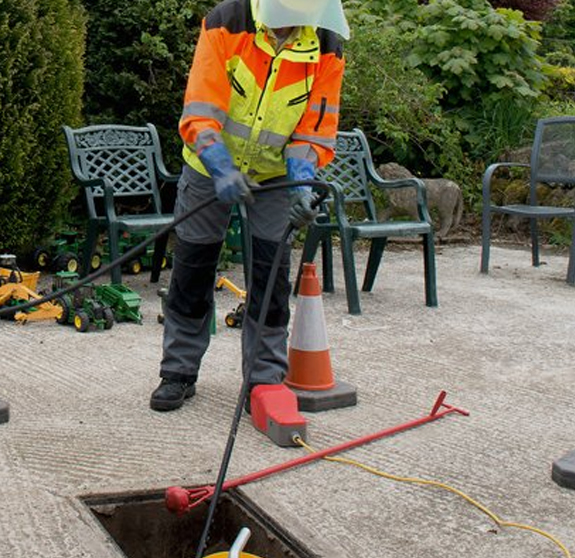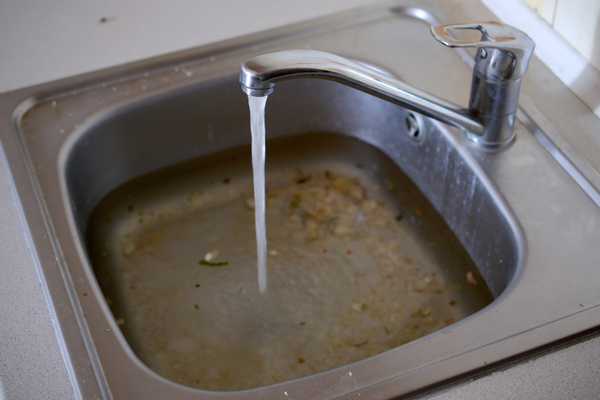What're your concepts about What I learned from trying to deal with a clogged drain?

Intro
Taking care of an obstructed drainpipe can be a frustrating experience, disrupting daily activities and potentially causing damages to your property. Nonetheless, prior to reaching out to pipes experts, there are steps you can take to attend to the issue on your own. In this overview, we'll explore DIY options and safety nets to take on a blocked drainpipe efficiently.
Recognizing the Issue
The primary step in resolving an obstructed drain is identifying the indicators. Slow-moving water drainage, gurgling sounds, foul odors originating from drains, or water backing up prevail indicators of an obstructed drainpipe. Recognizing these indications early can aid prevent even more difficulties.
Picking the Right Pipes Solution
When selecting a pipes service, consider factors such as experience, licensing, and customer testimonials. Select a trustworthy plumbing technician with a track record of quality handiwork and transparent rates practices.
Cost Factors to consider
The expense of expert drain cleaning services can vary relying on the severity of the blockage and the plumbing's prices. Request quotes from multiple providers and inquire about any type of service charges to make sure transparency and prevent surprises.
Security Measures
When trying DIY drain cleansing, focus on security. Use protective gloves and eyewear to stay clear of contact with harmful chemicals or germs. Never blend various drainpipe cleansing products, as this can generate dangerous fumes.
Case Studies
Real-life examples highlight the performance of DIY solutions and the importance of prompt specialist intervention in settling drain clogs.
Typical Root Causes Of Obstructed Drainpipes
Recognizing the aspects that add to drain obstructions is necessary for reliable resolution. Usual wrongdoers consist of hair, soap residue, oil, food particles, and foreign objects like sanitary products or paper towels. Tree roots invading below ground pipes can additionally cause substantial blockages.
DIY Solutions
For small clogs, several do it yourself services can be effective. Pouring boiling water down the drain can help dissolve grease and particles. Baking soda and vinegar or a mix of salt and baking soft drink can act as natural cleansers. Utilizing a bettor or pipes snake to dislodge blockages is one more option.
Devices and Equipment
Having the right tools handy can make do it yourself drain cleaning up extra efficient. A bettor is a flexible tool for getting rid of obstructions in sinks, commodes, and showers. A plumbing serpent or auger can reach deeper obstructions, while drainpipe cleansing chemicals can be used very carefully for persistent obstructions.
Safety nets
To stay clear of future obstructions, embracing preventive measures is crucial. Mount drain guards or strainers to capture hair and debris before they enter the pipelines. On a regular basis flush drains pipes with warm water to dissolve oil accumulation, and stay clear of throwing away oil or strong waste down the drain.
When to Call a Specialist
While DIY remedies can settle minor obstructions, particular indications indicate the requirement for professional help. Relentless blockages, foul odors in spite of cleaning up initiatives, or numerous drains supporting simultaneously are red flags that warrant skilled treatment.
Verdict
By following the tips described in this guide, you can properly take on obstructed drains pipes and protect against future plumbing problems. Whether choosing DIY services or seeking professional assistance, punctual action is key to maintaining a healthy plumbing system and preserving the stability of your home.
How to Clear a Clogged Drain Yourself (And When to Call In the Professionals)
What Can Clog a Drain
Dirt Skin flakes Hair Grease Soap scum Food Offset pipes Tree roots Small objects Mineral buildup DIY Tricks to Unclog a Drain
You can fix this! Once you have identified the source of the clog (or have a vague idea), you can try one or a combination of these fixes in order to clear your plumbing.
Wire Hanger or Snake
Untangle and clear out hair from a drainpipe with a homemade snake. Use a straightened-out wire hanger with a 90-degree angle hook to locate the clog and drag out any unwanted material.
Remember not to push the clog further down to where the wire hanger cannot reach! If you need to follow up with a plunger, give it a try. Your efforts might be more successful after it’s been wire-snaked.
If you want to get fancy and don’t have a wire hanger to spare, head to the store and pick up a hand-operated drain snake. You can get one for $10-$30. It may save you the hassle, and provide additional length to reach deep into the clogged pipe.
Plunger
A cup plunger has a suction cup attached to a wooden handle. The rubber creates a seal around the drain, and increases the pressure force of the plunger.
Plunge for 30-second increments to loosen the clog. This may need to be repeated over the course of 15-20 minutes. Once plunged, run the water to flush the remaining material out of the drain.
Remember– never use a plunger if you have used a chemical drain cleaner. These chemicals can splash up from the force of the plunger and cause serious injury or burns.
Boiling Water
Hot water can sometimes break up materials into a flushable amount. Dirt, grease, and soap buildup requires heat in order to unstick from surfaces.
Take your kitchen kettle and heat your water to a boil. Once it reaches a rolling boil, pour it directly down the drain into the blockage. Carefully follow with plunging, if necessary.
Don’t worry if this takes more than one try! It can often take multiple kettles and repeated plunging in order to clear a particularly stubborn clog.
Chemical Drain Cleaner
As a last resort, pick up a bottle of chemical drain cleaner. Drain-cleaning chemicals are potent, and not very good for the environment.
You may need to wear protective eyewear in gloves before handling your bottle of chemical drain cleaner. Follow the instructions printed on the bottle, and flush with water as soon as the instructions allow. Do not follow with plunging.
Baking Soda and Vinegar
As a safer alternative to chemical drain cleaner, baking soda and vinegar can create a chemical reaction that clears tough clogs.
Combine one cup of cleaning vinegar with one cup of boiling water, and set aside. Once you have done this, pour half a cup of baking soda down the drain. Give the baking thirty seconds to settle and cover a large portion of the problem drain.
Following the baking soda, pour down your vinegar and hot water solution. Once the vinegar and baking soda combine, the mixture will bubble and fix. Let this reaction fizzle in the drain for about an hour.
After an hour, follow with a kettle’s worth of hot water. The heat and liquid should flush out any remaining material.
When to Call a Plumber
If your DIY attempts haven’t cleared your clog drain, it’s time to call in a professional. It’s not worth losing access to your kitchen sink or high-traffic bathroom. A clog in a vital area can keep you from the things you’d rather be doing, and derail your routine.
Anytime a clog is causing water to spread is a time to call in a plumbing service. What starts out as a little bit of water can quickly grow into serious, expensive water damage.
Additionally, a serious clog can result in burst pipes or serious leaks. Make sure you know when to take it seriously!
https://myguysnow.com/how-to-clear-a-clogged-drain-yourself-and-when-to-call-in-the-professionals/

I ran across that piece about What I learned from trying to deal with a clogged drain while doing a search on the internet. Sharing is nice. Who knows, you could be helping someone out. Many thanks for your time spent reading it.
Click Here